As the nation’s largest university affiliated research center and a division of Johns Hopkins University (JHU), APL partners with other Johns Hopkins divisions to solve some of the nation’s — and world’s — toughest problems.
University affiliated research centers serve strategic national priorities, free from conflicts of interest or competition with commercial industry. Collaboration with leading research universities brings together the nation’s most highly skilled scientists, engineers and analysts to tackle vital national security and scientific challenges.
These initiatives enhance education and research, strengthen the university’s intellectual outreach and facilitate ties with the larger scientific and technology community. APL’s interdisciplinary partnerships include the Whiting School of Engineering (WSE), the Johns Hopkins Hospital, the School of Medicine (SOM), the Krieger School of Arts and Sciences, the Bloomberg School of Public Health and the School of Advanced International Studies (SAIS).
SURPASS
APL and WSE partner to tackle seemingly insurmountable challenges through the SURPASS initiative. The program leverages unique technical strengths at APL and WSE, bringing together cross-divisional teams using innovative, multidisciplinary approaches to address some of the world’s most pressing challenges. The program also pulls in experts from across JHU, including the SOM and Bloomberg School of Public Health.
In 2024, four projects were selected for the second cycle of SURPASS — CEREBRO: Enabling the Next Step of Human Evolution; Photoacoustic Retinal Prosthesis: A New Paradigm for Prosthetic Vision; ADD-H2: AI-Driven Discovery of High-Entropy H2 Generators; and Organoid Intelligence: Synthetic Biological AI. Notably, three of these projects — CEREBRO, Photoacoustic Retinal Prosthesis and Organoid Intelligence — were also part of the first SURPASS cycle. Each project is co-led by principal investigators from APL and WSE.
CEREBRO: The CEREBRO project aims to make noninvasive brain scans as common as routine checkups, with the potential to detect neurological disorders like Alzheimer’s years before onset and to enable noninvasive applications ranging from human performance monitoring to brain–computer interfacing. The team has already demonstrated that it is possible to convert weak magnetic fields like those generated by brain activity into optical signals. The team will further validate that their materials can measure biologically produced magnetic fields in their intended time frame and sensor format, and compare the sensors to brain-monitoring equipment.
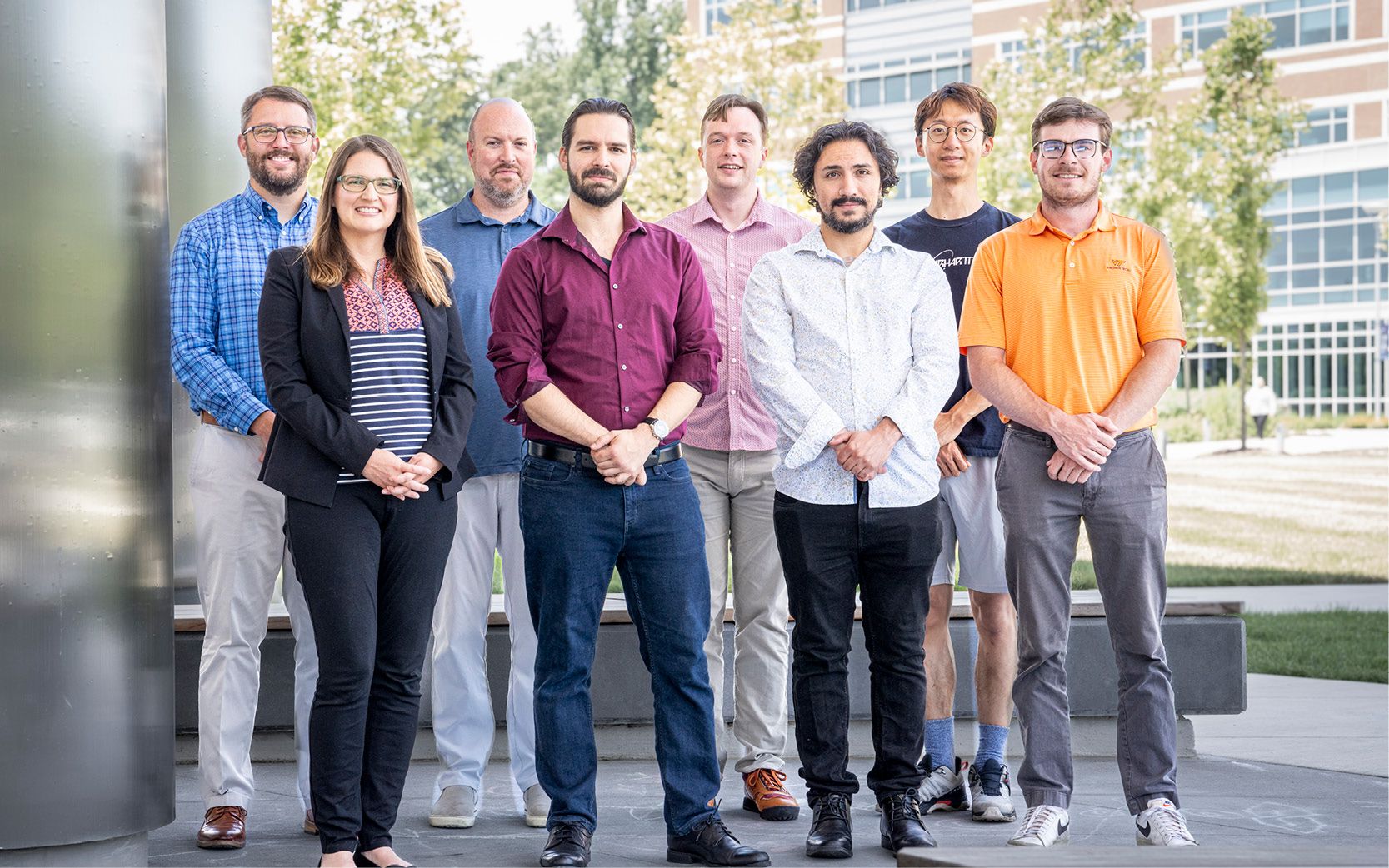
The CEREBRO team: (from left) Mark Foster (WSE), Amy Foster (co-principal investigator, WSE), Jeremiah Wathen (APL), Nicholas Pavlopoulos (co-PI, APL), Griffin Milsap (APL), Nathan Rafisiman (APL), Ruidong Xue (WSE) and Jackson Pittman (APL); (not pictured) Jacob Khurgin (WSE), Konstantinos Gerasopoulos (APL) and Elizabeth Marsh (SOM).
ADD-H2: This project focuses on hydrogen gas (H2) as a zero-emissions energy source. Through unique chemistry and innovative engineering, the team aims to design a reactor that employs principles of high-entropy materials to produce hydrogen from abundant resources like water and heat, enabling hydrogen production at both industrial and localized scales.
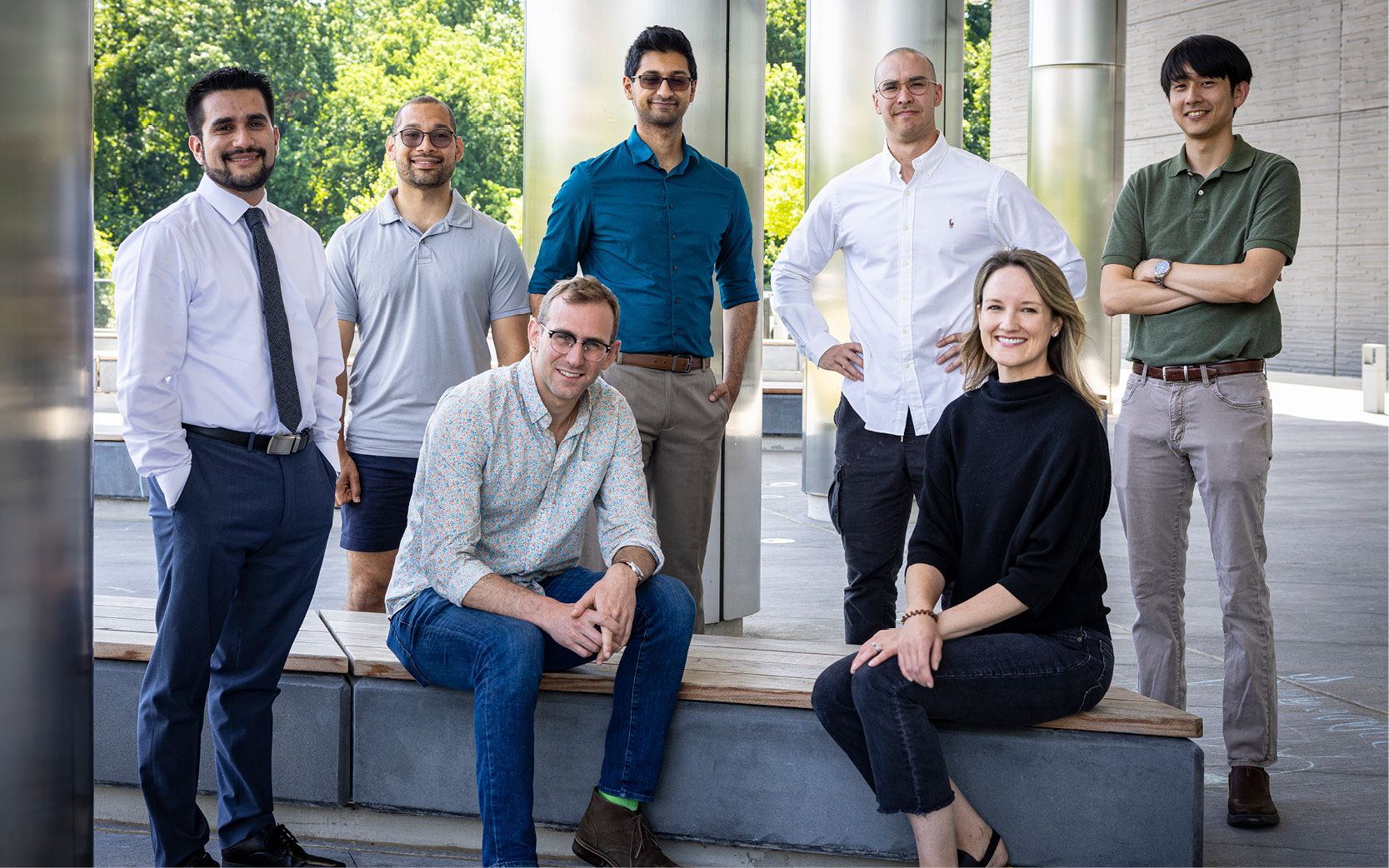
The team behind ADD-H2: (front row, from left) Avi Bregman (co-PI, APL) and Leslie Hamilton (APL); (back row, from left) Corey Oses (co-PI, WSE), A. Shoji Hall (WSE), Karun Kumar Rao (APL), Kenneth Kane (APL) and Victor Leon (APL); (not pictured) Morgan Trexler (APL).
PHOTOACOUSTIC RETINAL PROSTHESIS: The project team is developing a wearable device to restore vision to those with visual impairment or blindness. The wearable technology is less invasive with potentially a much higher resolution ability than traditional surgery or electrode arrays to stimulate retinal tissue and restore functional vision. The team’s patented approach — known as photoacoustic retinal stimulation (PARS) — involves using a focused nanosecond pulsed laser. The researchers are working to optimize performance, apply PARS to a wider range of retinal disorders, continue biological studies to characterize the safety and efficacy of the prototype, and optimize the approach through further experiments.
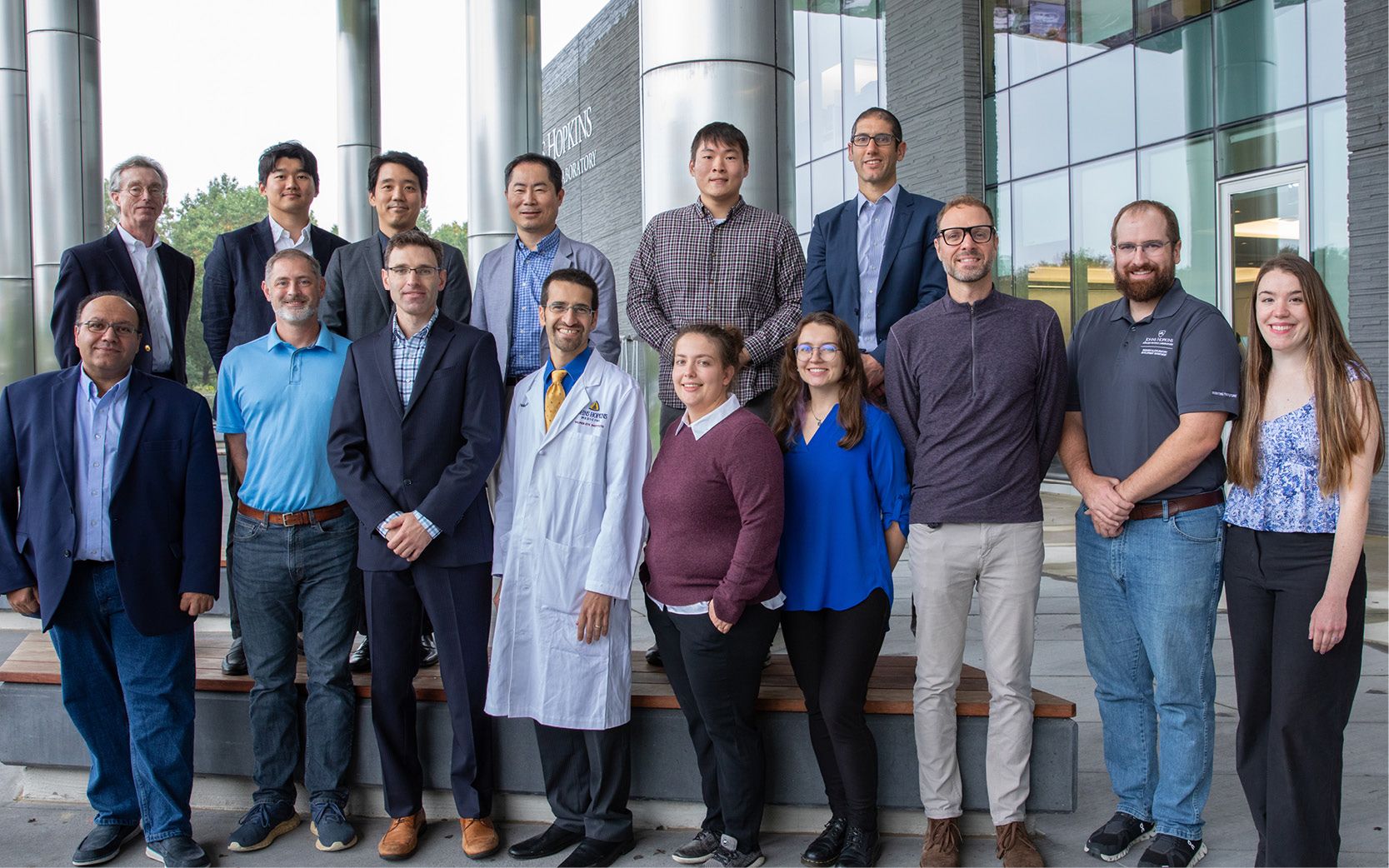
The Photoacoustic Retinal Prosthesis team: (back row, from left) James Spicer (WSE), Hyunwoo Song (WSE), Jeeun Kang (WSE), Jin Kang (WSE), Wayne Rogers (WSE) and David Shrekenhamer (APL); (front row, from left) Emad Boctor (co-PI, WSE), Luke Currano (APL), Seth Billings (co-PI, APL), Yannis Paulus (SOM), Jacalynn Sharp (APL), Alexandra Patterson (WSE), Chad Weiler (APL), Christopher Stiles (APL) and Erika Rashka (APL); (not pictured) Maomao Chen (SOM), Bree Christie (APL), George Coles (APL), Peter Gehlbach (SOM, WSE), Thomas Johnson (SOM), Dominique Meyer (WSE), Van Phuc Nguyen (SOM), Francesco Tenore (APL), Ji Yi (WSE), Don Zack (SOM) and Mi Zheng (SOM).
ORGANOID INTELLIGENCE: Our understanding of biological intelligence is still in its infancy, and the same might be said of artificial intelligence (AI). Integrating both into a single system holds the promise to dramatically improve our understanding of each and potentially produce a significant leap in computing as we know it. Project researchers are pioneering the use of brain organoids — 3D cell culture models grown from adult stem cells that mimic structural and functional properties in the brain — to do just that. The team successfully created a prototype system to study organoid intelligence, new methods for electrically stimulating and recording activity in organoids, innovative microfluidic devices to maintain the health and stability of the cell cultures, and novel machine learning and AI tasks to test these systems. The team seeks to scale up their systems, growing larger organoids and developing more testing modalities and tasks to gain insight into how these systems work.

A researcher uses an APL-designed Quantitative Phase Imaging microscope to study organoid cellular models, advancing the intersection of biology and AI to uncover new paradigms in computing and brain-like processes.
Artificial Intelligence and Assured Autonomy
Five years ago, APL and WSE formed the Institute for Assured Autonomy (IAA), a national center of excellence dedicated to ensuring the safe, secure, reliable and predictable integration of autonomous systems into society. As autonomous systems increasingly permeate everyday life, the IAA addresses a full spectrum of autonomous systems research, spanning foundational AI, practical applications and issues of ethics and governance.
In 2024, IAA led APL and WSE’s involvement in the newly formed U.S. AI Safety Institute Consortium (AISIC), an initiative launched by the U.S. Department of Commerce to unite industry, academia and government in establishing safety standards and practices for AI.
APL is leveraging its deep expertise in the research, development and deployment of assured autonomy — a field focused on ensuring that autonomous systems perform safely and effectively, even in unpredictable environments.
The partnership ensures that APL’s cutting-edge research and advancements in assured autonomy and assured AI contribute directly to AISIC’s mission to establish and promote AI safety standards. Utilizing the Lab’s capabilities in AI assurance, the collaboration also has the potential to actively shape the future of how autonomous technologies are developed and deployed in a manner that is both innovative and in alignment with ethical standards.
Discovery Awards
Hopkins launched the Discovery Awards program in 2015 to encourage cross-university collaborations leading to impactful work. Teams include members from at least two schools or affiliates of the university. In 2024, seven teams tapped the technical expertise of APL scientists and engineers. The 44 winning project teams, chosen by faculty members from over 280 proposals, feature individuals representing 11 Johns Hopkins divisions and institutes.
APL researchers lead four of the projects, which will investigate methods to adapt U.S. infrastructure for the future, use deep learning to model biological systems, create coastal resilience solutions for Baltimore and develop new DNA-based materials for 3D bioprinting. Three other projects draw on APL expertise in AI, materials science and signal processing.
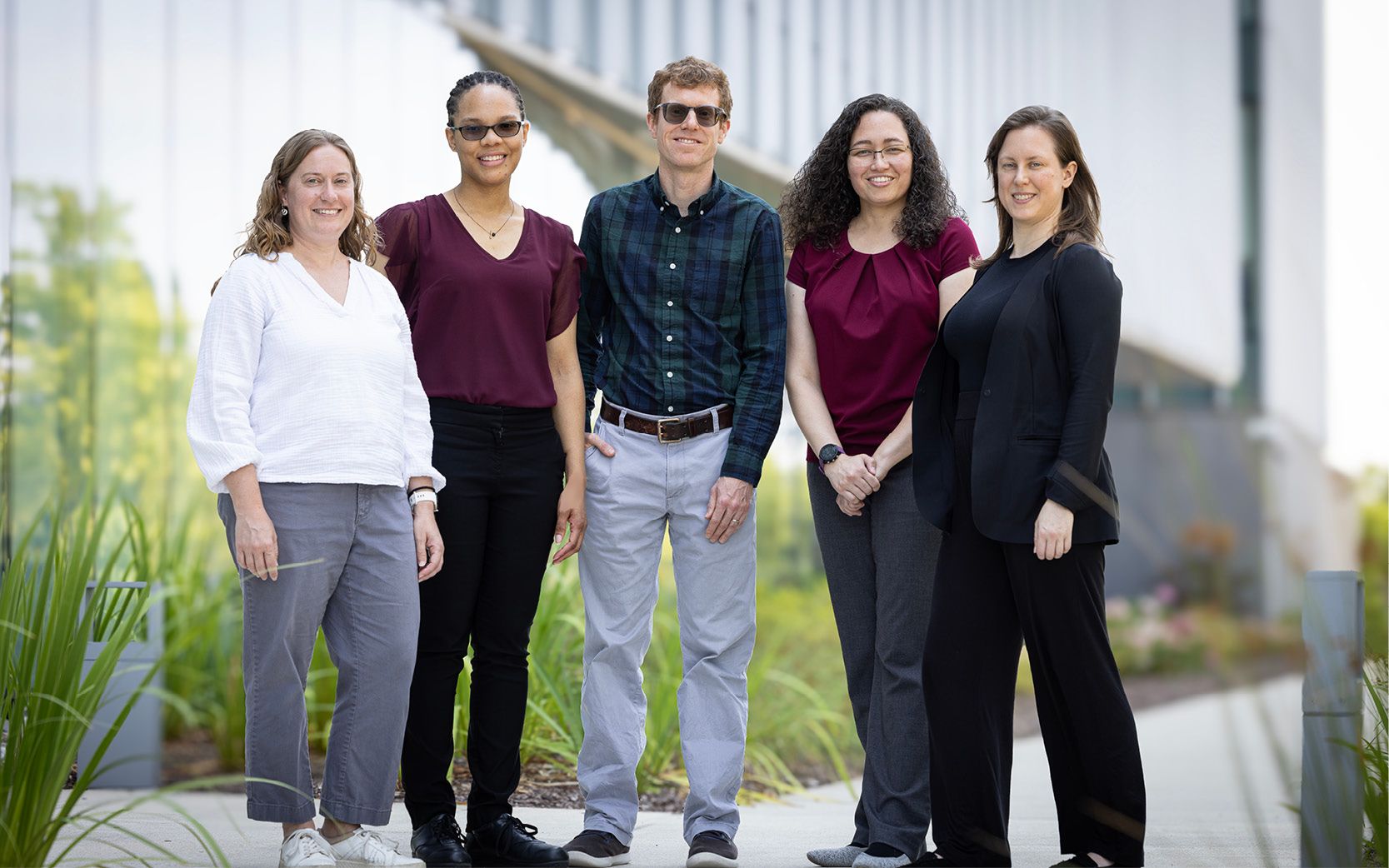
(From left) APL’s Rebecca Eager, Valerie Washington, Jared Markowitz, Marisel Villafane-Delgado and Krista Rand are working with researchers from WSE on a 2024 Discovery Award-funded project to improve how humans predict and prepare for impacts on critical infrastructure.
Engineering for Professionals
APL collaborates with WSE to lead graduate programs through the Johns Hopkins Engineering for Professionals (EP) program. APL continues to play a critical role in the development of programs at EP, which has its origins as an in-house program for the advanced training of APL employees.
Over the years, the program has grown and opened to the public, and up to 75% of the EP students now come from outside of APL. The faculty comprises scientists and engineers from APL and WSE; from regional aerospace, engineering and information technology companies; and government agencies.
EP offers master’s degrees in 25 areas, 14 of which are based at APL and chaired by APL’s technical professionals.
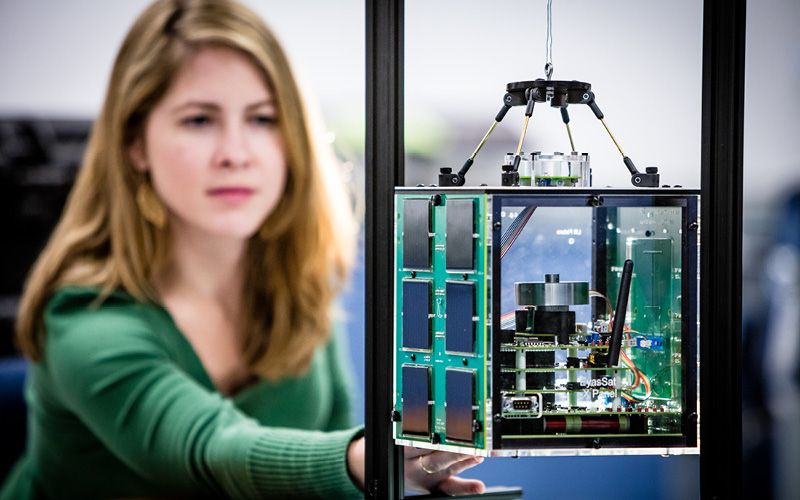
Students in the Johns Hopkins Engineering for Professionals (EP) program benefit from APL’s collaboration with WSE, gaining access to flexible, part-time graduate courses designed for working professionals. The program offers industry-aligned curricula and instruction from faculty who are experts actively engaged in fields ranging from aerospace to information technology.
RISE@APL
The RISE@APL program helps JHU students majoring in engineering, computer science, applied mathematics and physics prepare for technical careers. Students in RISE@APL work alongside APL experts in their field to focus on professional development and make critical contributions.
Space@Hopkins
APL works across Johns Hopkins divisions, departments and partners in a common pursuit of space research. Space@Hopkins highlights the wide scope of JHU’s space-related activities to foster collaboration among university-affiliated researchers and provide access to new partnerships. Focusing on eight initial research fields, including heliophysics, planetary science and spacecraft engineering, the work features collaborations with affiliates such as the Space Telescope Science Institute and NASA’s Goddard Space Flight Center.
In 2024, students from the U.S. Space Force’s Schriever and West Space Scholars Program at SAIS toured APL to find potential paths for collaboration. Students in the highly selective professional military education program can earn a master of international public policy degree. APL and WSE collaborated with SAIS to offer program candidates access to subject-matter experts and state-of-the-art classified facilities as they work on their research projects.
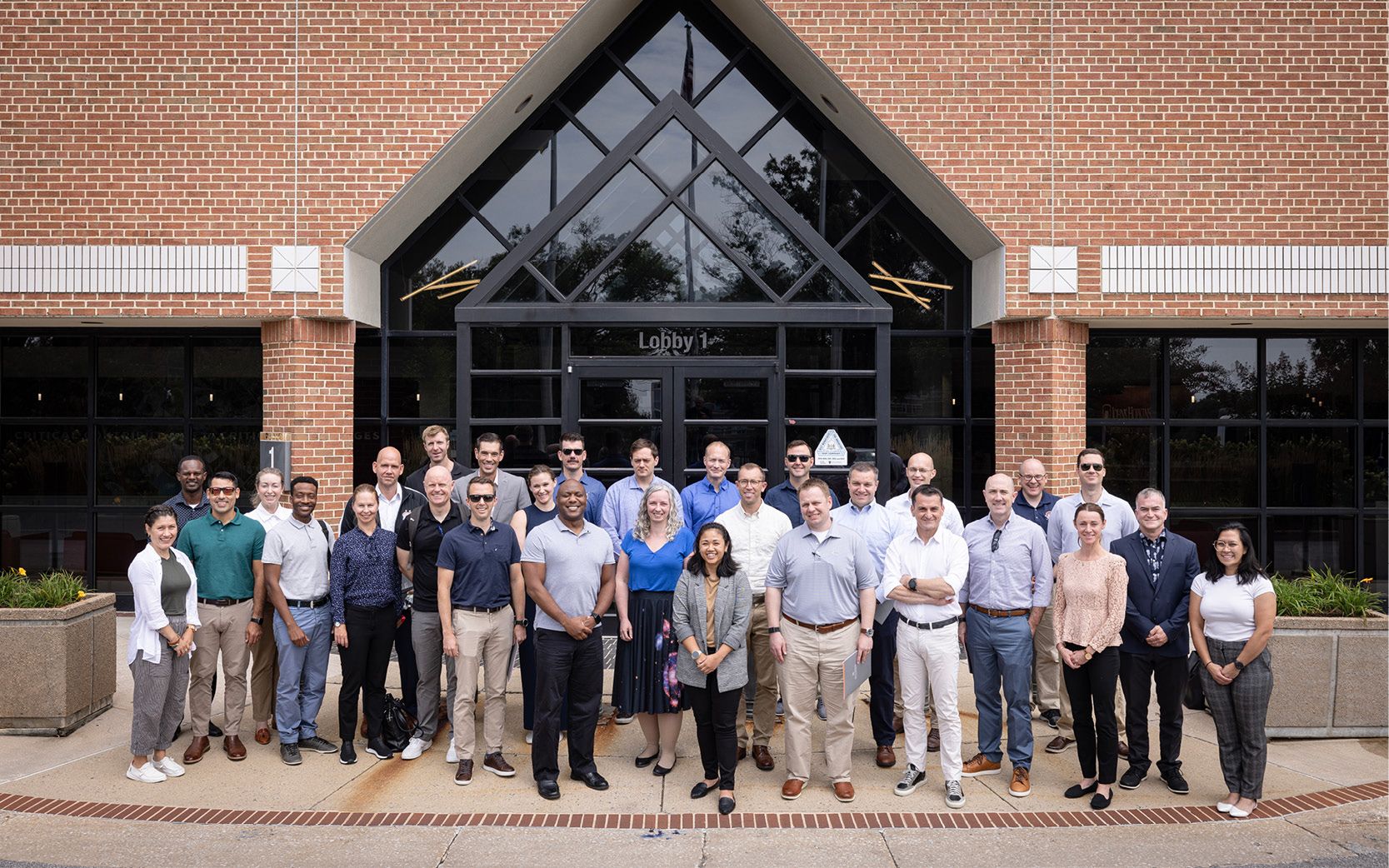
APL and WSE welcomed 70 students from the U.S. Space Force’s Schriever and West Space Scholars Program in August for a tour and opportunity to find potential paths for collaboration on space-related research and development projects.







